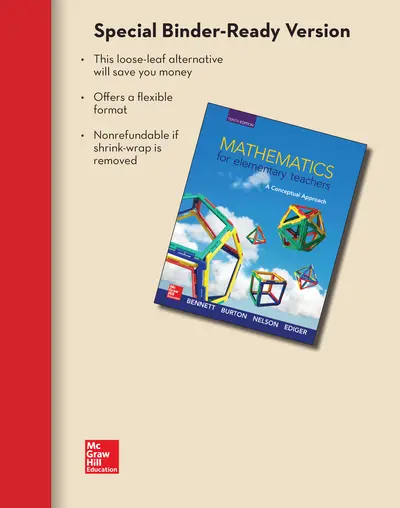My Account Details

ISBN10: 1259299759 | ISBN13: 9781259299759

* The estimated amount of time this product will be on the market is based on a number of factors, including faculty input to instructional design and the prior revision cycle and updates to academic research-which typically results in a revision cycle ranging from every two to four years for this product. Pricing subject to change at any time.
Instructor Information
Quick Actions (Only for Validated Instructor Accounts):
The tenth edition of Mathematics for Elementary Teachers: A Conceptual Approach continues the innovative time-tested approach of the previous editions: an emphasis on learning via specific, realistic examples and the extensive use of visual aids, hands-on activities, problem-solving strategies and active classroom participation. Features of the text focus on ensuring that prospective teachers will gain not only a deeper understanding of the mathematical concepts, but also a better sense of the connections between their college math courses and their future teaching experiences, along with helpful ideas for presenting math to their students in a way that will generate interest and enthusiasm. The text draws heavily on Common Core Standards and contains many pedagogical elements designed to foster reasoning, problem-solving and communication skills.
Additionally, this text can be packaged with an activity set that corresponds to each section of the companion text, Mathematics for Elementary Teachers: An Activity Approach, also by the Bennett, Burton, and Nelson team. Mathematics for Elementary Teachers: An Activity Approach can be used independently or along with its companion, Mathematics for Elementary Teachers: A Conceptual Approach.
Need support? We're here to help - Get real-world support and resources every step of the way.